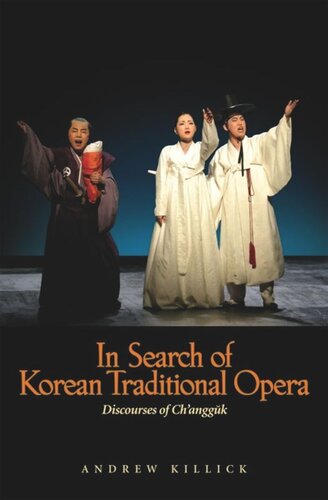

Most ebook files are in PDF format, so you can easily read them using various software such as Foxit Reader or directly on the Google Chrome browser.
Some ebook files are released by publishers in other formats such as .awz, .mobi, .epub, .fb2, etc. You may need to install specific software to read these formats on mobile/PC, such as Calibre.
Please read the tutorial at this link: https://ebookbell.com/faq
We offer FREE conversion to the popular formats you request; however, this may take some time. Therefore, right after payment, please email us, and we will try to provide the service as quickly as possible.
For some exceptional file formats or broken links (if any), please refrain from opening any disputes. Instead, email us first, and we will try to assist within a maximum of 6 hours.
EbookBell Team

0.0
0 reviewsThis is the first book on Korean opera in a language other than Korean. Its subject is ch’angguk, a form of musical theater that has developed over the last hundred years from the older narrative singing tradition of p’ansori. Andrew Killick examines the history and current practice of ch’angguk as an ongoing attempt to invent a traditional Korean opera form to compare with those of neighboring China and Japan. In this, the work addresses a growing interest within the fields of ethnomusicology and Asian studies in the adaptation of traditional arts to conditions in the modern world. Ch’angguk presents an intriguing case in that, unlike the "invented traditions" described in Hobsbawm and Ranger's influential book that were firmly established within a few years of their invention, ch’angguk remains in a marginal position relative to recognized traditional art forms such as South Korea’s "Important Intangible Cultural Properties" after more than a century. Performers, writers, directors, and historians have looked for ways to make the genre more traditional, including looking outside Korea for comparisons with traditional theater forms in other countries and for recognition of ch’angguk as a national art form by international audiences.
For the benefit of readers who have not seen ch’angguk performed, the author begins with a detailed description of a typical performance, illustrated with photographs and musical examples, followed by a history of the genre—from its still disputed origins in the early twentieth century through a major revival under Japanese colonial rule and the flourishing of an all-female version (yosong kukkuk) after Liberation to the efforts of the National Changgeuk Company and others to establish ch’angguk as Korean traditional opera. Killick concludes with analyses of the stories and music of ch’angguk and a personal view on developing a Korean national theater form for international audiences.